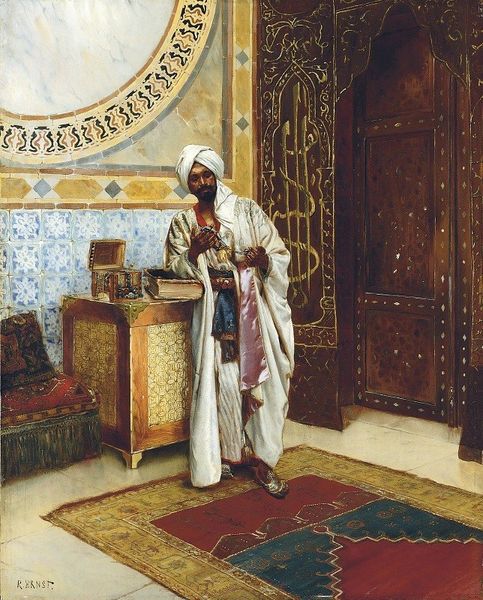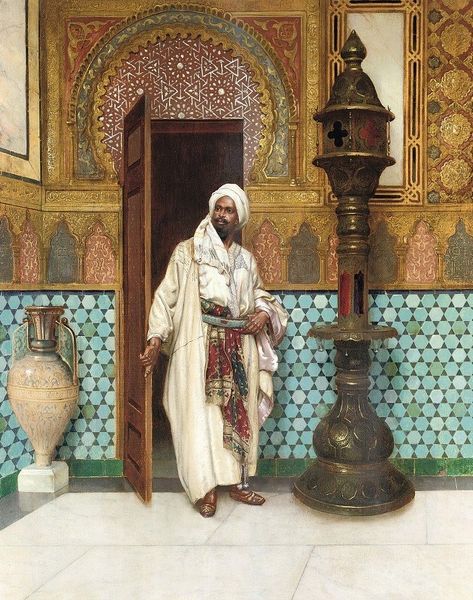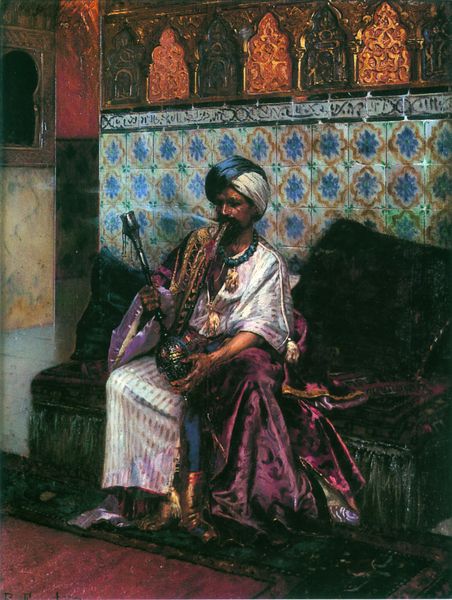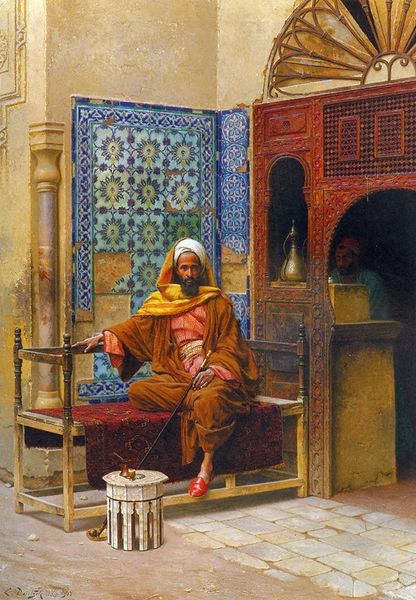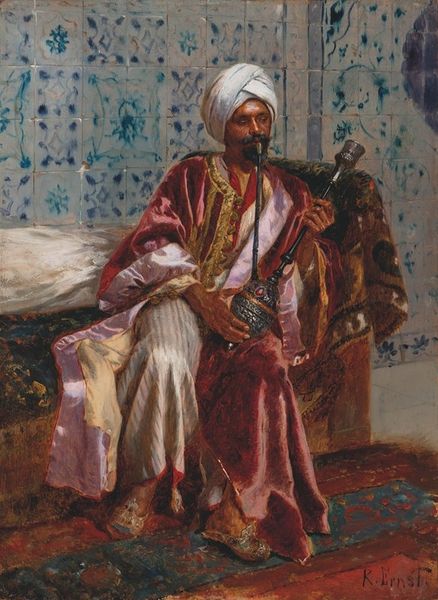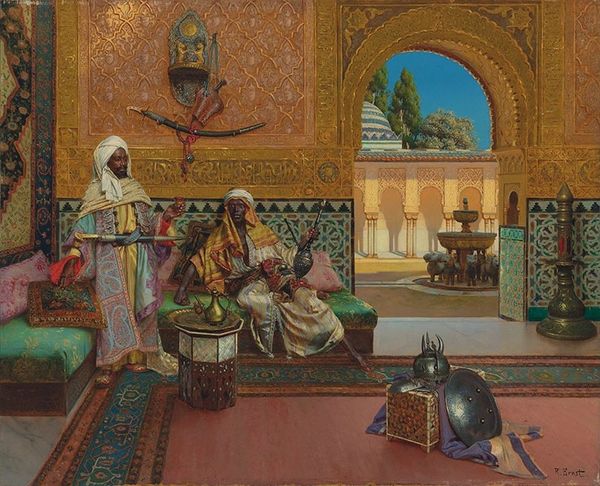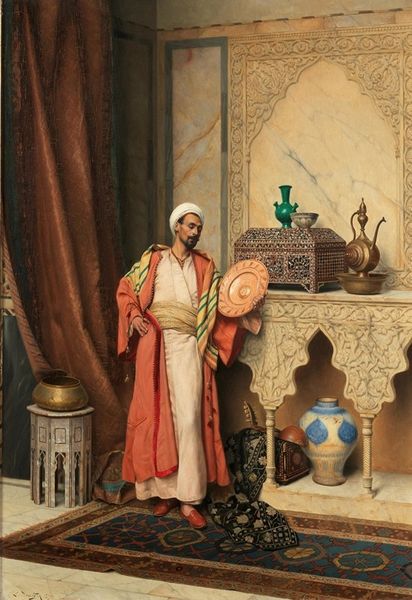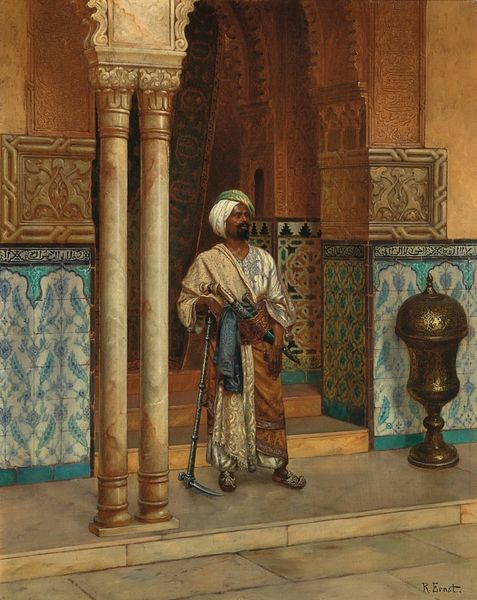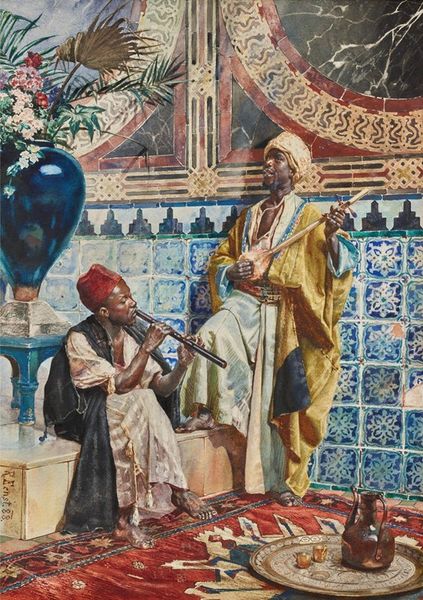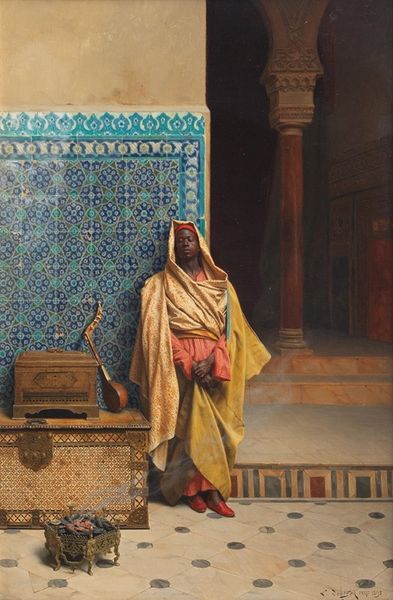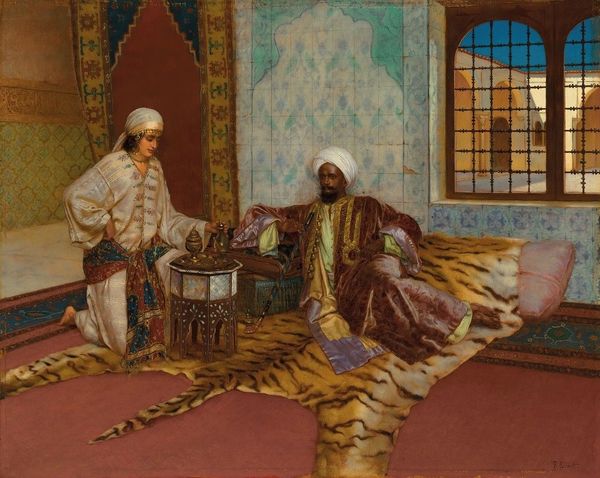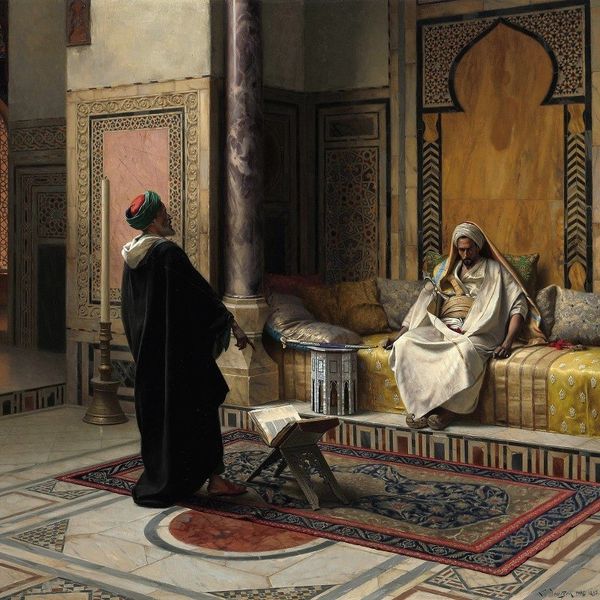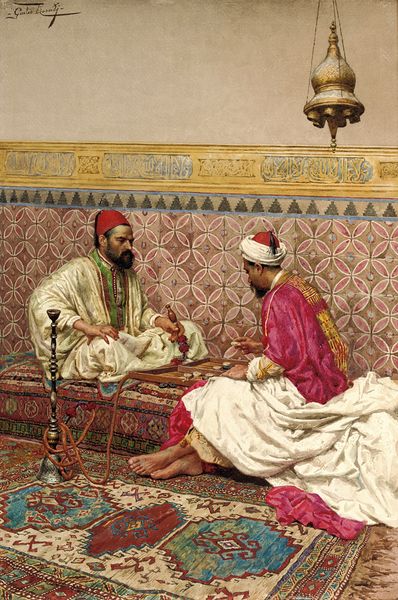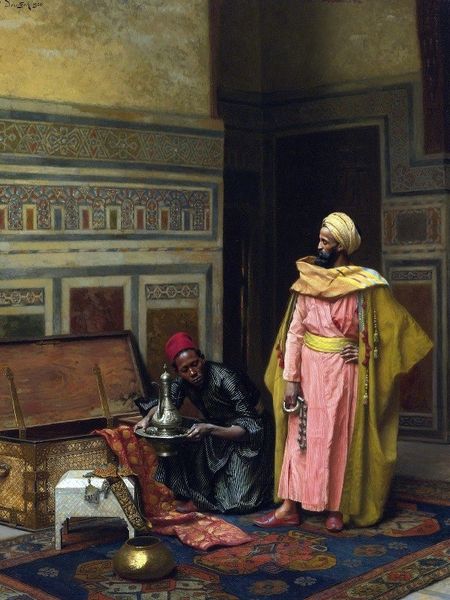
painting, oil-paint
#
portrait
#
gouache
#
figurative
#
painting
#
oil-paint
#
figuration
#
oil painting
#
orientalism
#
genre-painting
Copyright: Public Domain: Artvee
Curator: At first glance, I see an image steeped in quietude. A solitary figure engrossed in a book… it exudes an atmosphere of learned contemplation. Editor: Exactly. And let me introduce this fascinating oil painting; we know it as "The Scholar" by Rudolf Ernst. Ernst was quite known for his Orientalist genre paintings, although details are a bit sparse. He lived until 1932 but precise dates of pieces like this aren't always available. Curator: Orientalism. That loaded term carries a heavy cultural baggage now, doesn’t it? But I’m struck by how Ernst deploys the symbols of scholarship and religion – the open books, the intricate calligraphy on the book stand—they're not just decorative elements; they suggest the weight of knowledge and tradition. Editor: Indeed. And that's what made his work appealing to audiences in Europe, it created an exotic window onto different cultures, while also serving its social and cultural position within society. Curator: But what's interesting is that they were not all exactly based on first-hand experience as a lot of artist utilized studio sets and props to conjure up a romanticised image. And in that romanticized world of his Oriental fantasies, "The Scholar", is a clear example of using recognizable Islamic symbols to evoke cultural identity for the painting’s figure. What I consider deeply in that context is the cultural continuity, memory encoded in those images; those symbols transmit certain associations regardless of where and when one sees them. Editor: True. The tile work, the ornate designs—they feed into that construction. But that exoticised depiction also obscures the true history. Do you feel this piece flattens and distorts a richer, more nuanced reality for that era in terms of representing actual cultural conditions? Curator: No doubt. But within this constructed reality there are details that are telling - the lighting, the colour palette of earthy tones and how those tones suggest serenity. And let's note how Ernst focuses on detail - that exquisite detail elevates a simple scene to become the centerpiece of visual and cultural interest. It tells us what to fixate on within the imagined scene before us. Editor: Right. Perhaps that kind of work served its purpose by allowing many Westerners, for a moment, to perceive other parts of the world outside the ones they knew. But, even with the best intentions of their patrons, Ernst’s piece is clearly part of a cultural and political dialogue. Curator: Yes, it stands now as both an art historical artifact and a site for continued inquiry into how we engage with representations of the 'other' across time. It requires consideration in every context it's presented within. Editor: So, in viewing this piece, we engage with not only the artistic and cultural context, but the shifting tides of how that kind of culture is now critically examined.
Comments
No comments
Be the first to comment and join the conversation on the ultimate creative platform.
